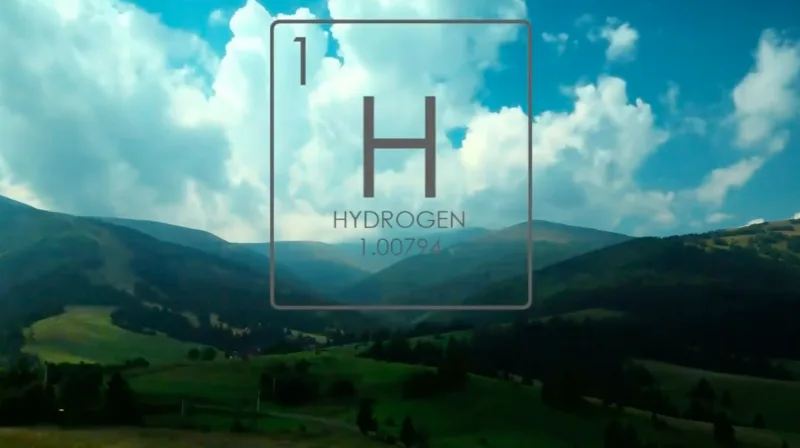
Fuel of the future? What hydrogen can (and can't) do for Canada
Worldwide, the hydrogen industry could be worth $11 trillion by 2050, including a $50-billion sector in Canada employing 350,000 people.
It sounds too good to be true: hydrogen, the miraculous ‘fuel of the future,’ will power the zero-emission economy we’d need to stave off the worst of climate change. It could also unlock new industries worth billions of dollars.
By means of a chemical process involving hydrogen and water, the fuel is used to generate the electricity needed to run a wide range of vehicles, and the only real byproduct of the process is water — meaning hydrogen-fuelled vehicles could roam the roads spitting out nothing but molecules of H20.
It sounds satirical, like a spoof of what some 1950s futurist would scribble in their journal of half-baked sci-fi story pitches. But it’s very real, and governments are putting down very real money to make it a reality.
The U.S. and European Union both laid the groundwork for formal hydrogen strategies in the last year. At home, the federal government has its own strategy to capture a share of what it estimates will be an $11-trillion global market, with a made-in-Canada hydrogen industry that could be worth as much as $50 billion and employ 350,000 people by mid-century.
The private sector is increasingly showing signs of wanting in on that action. In the last few months, Thyssenkrupp announced plans for a production plant in Quebec, Ballard is set to produce hydrogen fuel cells for CPR locomotives, and, on a smaller scale, Toyota is partnering with Lyft to improve visibility of its hydrogen passenger vehicles in British Columbia.
WATCH BELOW: LYFT PARTNERS WITH TOYOTA TO PROVIDE HYDROGEN VEHICLES TO DRIVERS
To harness some of that interest Edmonton launched the country’s first ‘hydrogen hub’ in April, with funding from all three levels of government, and partners with a range of interest groups, to kick-start the hydrogen industry in that province.
Canada’s oil and gas heartland might seem like an odd place for a clean fuel revolution, but the province’s experience actually improves the region’s chances of capitalizing on it, at least according to David Layzell, the research director of Transition Accelerator, one of the partners of the Edmonton hydrogen hub.
“What we’re looking at is piggybacking on the hydrogen production that’s now used as an industrial feedstock, and diverting that and making that into an end-use fuel,” he said in an interview with The Weather Network.
Layzell says Alberta is well-placed to tap into the burgeoning alternative fuel market due to its experience with hydrogen, derived from natural gas, in cracking bitumen into synthetic crude oil. Alberta, he says, produces 5,000 of the 8,000 tonnes of hydrogen made in Canada daily, and beyond the province, some refineries use hydrogen to convert crude into petrochemicals.
NOT ALL HYDROGEN IS CREATED EQUAL
Though hydrogen is, famously, the simplest and most abundant element in the universe, it rarely occurs naturally on its own, and is instead combined with other elements. Pure hydrogen is derived from some kinds of fossil fuels, or by electrolysis of water. The difference lies in the source of the electricity used in the production process, and the industry uses colour-coded language to distinguish between the emissions levels of different energy inputs.
At the top of the pyramid is “green” hydrogen, produced using renewable energy, and as such has no CO2 emissions anywhere during the process (the renewable part of the hydrogen colour spectrum gets a bit more crowded when you factor in “pink” hydrogen, produced from nuclear, and “yellow” hydrogen, from solar).
The next-best option is “blue” hydrogen, produced from fossil fuels like natural gas but where the emissions are captured and sequestered during the process, while at the very bottom sits “grey” hydrogen, produced from fossil fuels but without CO2 sequestration.
Layzell says carbon capture of emissions from the hydrogen production process is completely feasible in Alberta and, in the long run, existing pipelines can even be reconfigured to transport liquid hydrogen domestically or for export.
“It’s not a matter of putting [oil and gas] companies out of business, it’s changing what they do, what they make, and how they do it,” he says.
WATCH BELOW: CANADIAN COMPANY CAPTURES CARBON DIOXIDE AND USES IT TO MAKE CONCRETE
Though some automakers are experimenting with hydrogen passenger vehicles, Layzell says hydrogen isn’t really meant to compete with EVs in that realm. The real beneficiaries, Layzell says, would be heavier-duty vehicles, such as trains, ships, or freight trucks, that don’t get much downtime to refuel.
In other realms, battery-based electric and hydrogen will be suitable for different things — the former for heating systems and some industrial purposes, the latter for producing the electricity itself, as well as larger, more intensive industries such as steel-making.
“There’s an opportunity for a ‘hydricity system’ — hydrogen-electricity — to actually be more equitable around the world in terms of access to the energy that society needs,” Layzell says.
Layzell says the biggest challenge would be coordinating investment throughout the hydrogen process, from production to end-use, so that it scales up sustainably: in hubs like Edmonton, initially, then in ‘corridors,’ then a widespread network across the country, so that the new hydrogen infrastructure can endure once public money stops and private money steps up.
“Like any chain, it’s only as strong as its weakest link,” Layzell says. “So we need to focus both public and private investment at the critical parts along the value chain, so that each link in the chain is similarly strong, and we can have the strongest chain possible that meets societal needs economically and socially, providing the energy resources we need.”












